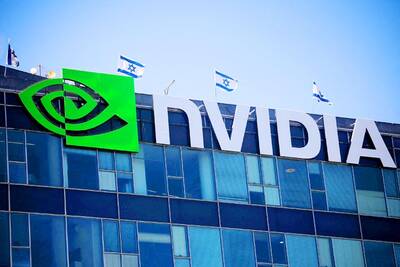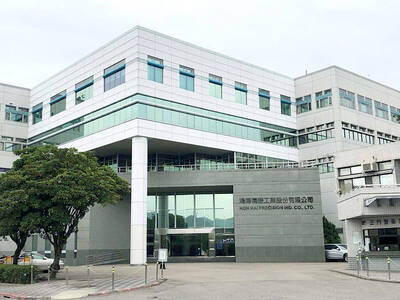The government broke ground for a new exhibition hall in Nangang District (南港), Taipei, yesterday to address the increasing demand for floor space for international exhibitions.
The NT$7.26 billion (US$243 million) Taipei Nangang Exhibition Center Hall 2 is set to be built on a 3.36-hectare lot opposite Hall 1 and is expected to be completed by the end of 2015, according to the Ministry of Economic Affairs.
The nine-floor building is set to accommodate 2,362 exhibition booths and conference space for 2,400 people when it begins operations in 2016, ministry officials said at the groundbreaking ceremony.

Photo: Lin Cheng-kung, Taipei Times
Premier Sean Chen (陳冲) said the development of the exhibition industry would help Taiwanese enterprises learn new technologies, find new trade partners or seek targets for acquisitions at a wide array of international trade fairs to be held at the venue.
“It’s not [about] what you know. It’s [about] who you know,” Chen said.
The premier said that the new hall would bring the total floor area of Taipei’s exhibition halls to 100,000m2, but this would still lag behind other countries with more mature exhibition industries.
Germany’s four biggest exhibition halls have at least 300,000m2 of space each, Chen said, and Germany ranks only third among the world’s largest exhibition-hall providers, behind the US and China.
Separately, Vice Minister of Economic Affairs Francis Liang (梁國新) said that the government would help domestic manufacturers capitalize on growing commercial opportunities in emerging markets by assisting them in branding and other marketing needs.
Liang said emerging markets, especially those in Asia, are gradually supplanting Europe and the US as the consumer markets with the greatest potential, because of their strong domestic demand.
Based on estimates by international marketing companies, the middle class in these emerging markets could spend up to US$20 trillion over the next decade, which is twice the size of the US consumer market, Liang said.
He pledged that the government would assist domestic manufacturers in strengthening their design, innovation, research and development and international branding capabilities to get an edge in these markets.
“We will initially target markets in mainland China, Indonesia and Vietnam,” he said at this year’s Taiwan International Brand Forum, sponsored by the Bureau of Foreign Trade.

Shares in Taiwan closed at a new high yesterday, the first trading day of the new year, as contract chipmaker Taiwan Semiconductor Manufacturing Co (TSMC, 台積電) continued to break records amid an artificial intelligence (AI) boom, dealers said. The TAIEX closed up 386.21 points, or 1.33 percent, at 29,349.81, with turnover totaling NT$648.844 billion (US$20.65 billion). “Judging from a stronger Taiwan dollar against the US dollar, I think foreign institutional investors returned from the holidays and brought funds into the local market,” Concord Securities Co (康和證券) analyst Kerry Huang (黃志祺) said. “Foreign investors just rebuilt their positions with TSMC as their top target,

H200 CHIPS: A source said that Nvidia has asked the Taiwanese company to begin production of additional chips and work is expected to start in the second quarter Nvidia Corp is scrambling to meet demand for its H200 artificial intelligence (AI) chips from Chinese technology companies and has approached contract manufacturer Taiwan Semiconductor Manufacturing Co (TSMC, 台積電) to ramp up production, sources said. Chinese technology companies have placed orders for more than 2 million H200 chips for this year, while Nvidia holds just 700,000 units in stock, two of the people said. The exact additional volume Nvidia intends to order from TSMC remains unclear, they said. A third source said that Nvidia has asked TSMC to begin production of the additional chips and work is expected to start in the second

REVENUE PERFORMANCE: Cloud and network products, and electronic components saw strong increases, while smart consumer electronics and computing products fell Hon Hai Precision Industry Co (鴻海精密) yesterday posted 26.51 percent quarterly growth in revenue for last quarter to NT$2.6 trillion (US$82.44 billion), the strongest on record for the period and above expectations, but the company forecast a slight revenue dip this quarter due to seasonal factors. On an annual basis, revenue last quarter grew 22.07 percent, the company said. Analysts on average estimated about NT$2.4 trillion increase. Hon Hai, which assembles servers for Nvidia Corp and iPhones for Apple Inc, is expanding its capacity in the US, adding artificial intelligence (AI) server production in Wisconsin and Texas, where it operates established campuses. This

US President Donald Trump on Friday blocked US photonics firm HieFo Corp’s US$3 million acquisition of assets in New Jersey-based aerospace and defense specialist Emcore Corp, citing national security and China-related concerns. In an order released by the White House, Trump said HieFo was “controlled by a citizen of the People’s Republic of China” and that its 2024 acquisition of Emcore’s businesses led the US president to believe that it might “take action that threatens to impair the national security of the United States.” The order did not name the person or detail Trump’s concerns. “The Transaction is hereby prohibited,”